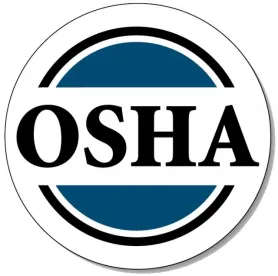The maximum penalty that the Occupational Safety and Health Administration (OSHA) can assess for a violation of an OSHA standard has been a constant source of consternation within the agency as well as with workers’ rights advocates. The statutory maximum, which currently is set at $70,000 for willful and repeat violations and $7,000 for serious and other than serious violations, has remained unchanged since 1990. The Protecting America’s Workers Act (PAWA), first introduced by Senator Edward Kennedy in 2004, and reintroduced in each congressional session since 2004, sought to increase the maximum amount of statutory penalties as well as make other changes to the Occupational Safety and Health Act. In each congressional session, PAWA died in committee.
But a little known section of the Bipartisan Budget Act of 2015, which authorized funding for federal agencies through September 30, 2017, will change all of this.
Section 701 of the Bipartisan Budget Act of 2015 contains the Federal Civil Penalties Inflation Adjustment Improvements Act of 2015, which requires OSHA and most other federal agencies to implement inflation-adjusted civil penalty increases. The Inflation Adjustment Act requires a one time “catch-up adjustment” that is based upon the percent change in the Consumer Price Index in October of the year of the last adjustment and October, 2015. Subsequent annual inflation adjustments are also required.
On February 24, 2016, the Office of Management and Budget issued guidance on the implementation of the Inflation Adjustment Act. This guidance set the catch-up adjustment multiplier for OSHA penalties at 1.78156 – which roughly equates to an increase in the maximum penalty per violation as follows:
The Inflation Adjustment Act allows OSHA to request a reduced catch-up adjustment if it demonstrates the otherwise required increase of the penalty would have a negative economic impact or that social costs would outweigh the benefits. But given published comments from OSHA administrators over the years, which were openly critical of the current statutory maximum amount, the prospect for any such reduction request is remote.
OSHA is required to publish the new penalty levels through an interim final rule in the Federal Register no later than July 1, 2016. The new penalty levels will take effect on August 1, 2016. Because OSHA is subject to a six-month statute of limitations, it is possible that violations occurring on or after March 2, 2016 will be subject to the new maximum penalty amounts if OSHA uses the entire six month period before issuing the citation and assessment of penalties.
The Inflation Adjustment Act does not impact OSHA’s discretion to reduce a proposed penalty in accordance with its current procedures, which take into account the size of the employer, the gravity of the violation, the employer’s history of prior violation, good faith compliance and “quick fix” abatement measures. The Act also does not govern those States which have OSHA approved plans. However, because States have to establish that their plan is as effective as federal OSHA, one would expect that OSHA will develop guidance that requires the States to increase their maximum penalty levels to comport with the new federal penalty amounts.
In the meantime, employers would be well-advised to conduct a self-audit of their workplace safety programs to ensure compliance with applicable state and federal OSHA standards.



 />i
/>i



